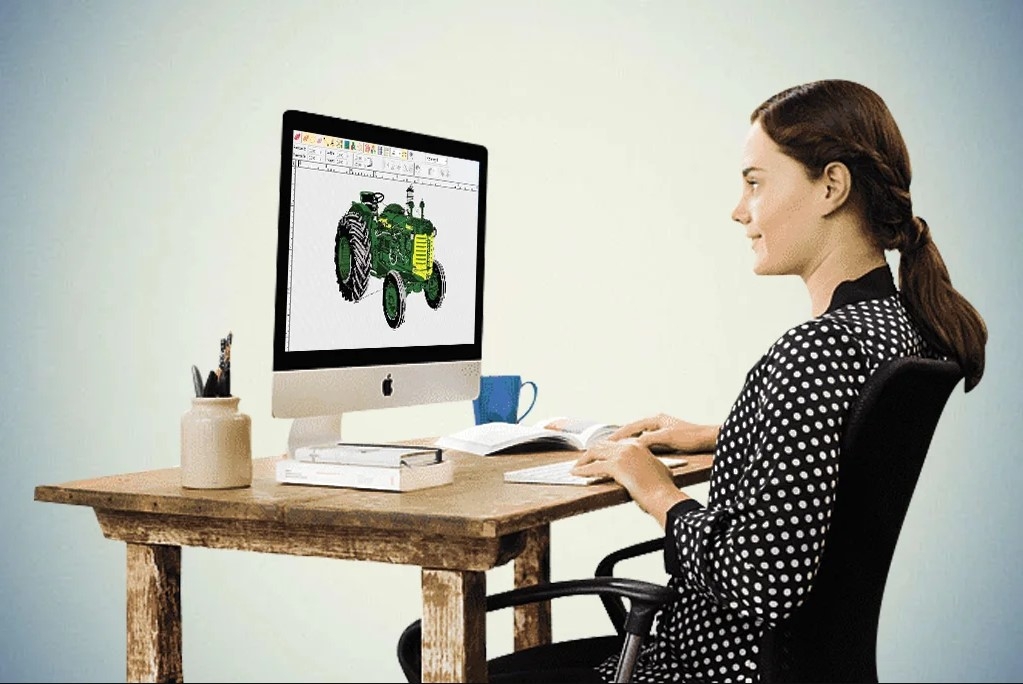Digitized Embroidery: A Complete Guide for Beginners

Introduction
Embroidery has long been a cherished art form, but with modern technology, digitized embroidery has revolutionized the industry. Whether you're a hobbyist or a business owner, understanding embroidery digitizing is essential for creating precise, high-quality designs. This guide explores everything you need to know to get started with digitized embroidery.
What is Digitized Embroidery?
Understanding the Basics
Digitized embroidery is the process of converting artwork into a digital file that embroidery machines can read. This involves assigning stitch types, adjusting density, and optimizing stitch paths for flawless execution.
How It Differs from Traditional Embroidery
Unlike hand embroidery, digitized embroidery relies on specialized software and machines to create intricate designs with high precision. This ensures uniformity and allows for mass production without compromising quality.
The Importance of Quality Digitizing
Poor digitizing can lead to thread breaks, uneven stitches, and design distortions. Professional digitizing services ensure that each design is optimized for smooth stitching and durability.
Essential Tools for Embroidery Digitizing
Embroidery Software
Popular digitizing software includes Wilcom, Hatch, Brother PE-Design, and Embrilliance. These tools allow users to create, edit, and optimize embroidery files with ease.
Embroidery Machines
Different embroidery machines, such as Brother, Janome, and Tajima, require specific digitized file formats. Choosing the right machine ensures compatibility and high-quality results.
Thread and Fabric Considerations
The choice of thread and fabric affects stitch density and design clarity. Polyester and rayon threads are popular due to their durability and sheen, while cotton and silk require special adjustments for smooth embroidery.
Step-by-Step Process of Embroidery Digitizing
1. Preparing the Design
Start with a high-resolution image of your design. Simple, clean graphics work best, as intricate details may not translate well into stitches.
2. Selecting Stitch Types
Different stitches, such as satin, fill, and running stitches, are used based on the design’s complexity. Satin stitches work well for lettering, while fill stitches are ideal for larger areas.
3. Adjusting Stitch Density and Underlay
Proper stitch density ensures a balanced, durable design. Underlay stitches provide a stable foundation, preventing fabric puckering and enhancing the final look.
Common Challenges in Digitized Embroidery and How to Overcome Them
Thread Breaks and Tension Issues
Incorrect tension settings and low-quality thread can cause frequent thread breaks. Using high-quality thread and adjusting machine tension resolves this issue.
Fabric Puckering
Improper hooping and incorrect stitch density can lead to puckering. Stabilizers and proper digitizing techniques help prevent fabric distortion.
Uneven Stitches and Gaps
Gaps occur when stitch directions are not optimized. Proper pathing and compensations ensure smooth, gap-free embroidery.
Best Practices for High-Quality Digitized Embroidery
Use High-Resolution Images
Starting with a clear, high-quality image ensures better digitizing results. Low-resolution images lead to pixelation and unclear embroidery designs.
Test Stitch Your Design
Running a test stitch before full production helps identify errors and make necessary adjustments, saving time and materials.
Choose the Right Stabilizer
Stabilizers support the fabric and prevent distortion. Tear-away stabilizers work well for woven fabrics, while cut-away stabilizers are ideal for stretchable materials.
Trends in Embroidery Digitizing
3D Puff Embroidery
Raised embroidery using foam creates a bold, three-dimensional effect, commonly seen in caps and promotional items.
AI-Powered Digitizing
Artificial intelligence is improving digitizing accuracy, automating stitch selection and reducing manual adjustments.
Eco-Friendly Embroidery
Sustainable threads, water-soluble stabilizers, and energy-efficient machines contribute to environmentally friendly embroidery practices.
Conclusion
Digitized embroidery is a powerful tool for creating professional, high-quality embroidered designs. By understanding the process, choosing the right tools, and following best practices, beginners can master embroidery digitizing and achieve outstanding results. Investing in proper digitizing techniques ensures smooth stitching, durability, and visually appealing embroidery every time.
- Questions and Answers
- Opinion
- Motivational and Inspiring Story
- Technology
- Live and Let live
- Focus
- Geopolitics
- Military-Arms/Equipment
- Sicurezza
- Economy
- Beasts of Nations
- Machine Tools-The “Mother Industry”
- Art
- Causes
- Crafts
- Dance
- Drinks
- Film/Movie
- Fitness
- Food
- Giochi
- Gardening
- Health
- Home
- Literature
- Music
- Networking
- Altre informazioni
- Party
- Religion
- Shopping
- Sports
- Theater
- Health and Wellness
- News
- Culture

